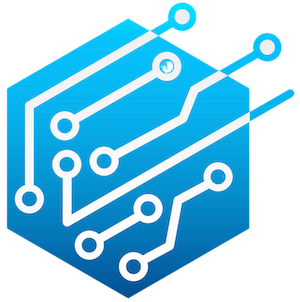For decades, the scientific community has been locked in a relentless quest to unravel the universe’s deepest secrets. Major projects like LIGO, tasked with detecting gravitational waves, embody this persistent drive. Yet, even with decades of meticulous effort and collaborative ingenuity, certain monumental questions remained stubbornly unanswered. Now, artificial intelligence emerges as a game-changer—offering a fresh lens that challenges the notion that some mysteries are beyond our reach. While AI may not have yet produced groundbreaking discoveries in physics, its potential toamp up our investigative capabilities is undeniable and transformative.
What makes AI such a compelling tool is its capacity to sift through colossal datasets—finding patterns and symmetries that elude human detection. In particle physics, for example, AI systems have identified symmetries in cosmic data from the Large Hadron Collider, echoing principles foundational to Einstein’s theories. These findings serve two critical purposes: they reaffirm known physics and serve as proof of concept for future breakthroughs. Rather than replacing human creativity and intuition, AI acts as an amplifier—pushing the boundaries of what we can discover and understand.
Furthermore, AI’s role extends beyond pattern recognition. It’s becoming instrumental in formulating new equations and models, such as those describing the distribution of dark matter—arguably the universe’s most elusive substance. Such models aren’t just mathematical curiosities; they are key to understanding the architecture of the cosmos. This opens a path for human scientists: to learn from and build upon AI-generated solutions, accelerating the cycle of hypothesis, testing, and understanding in physics.
Quantum Mechanics and the Unexpected Power of Entanglement
Delving into the baffling world of quantum physics reveals a landscape where traditional notions of reality are turned upside down. Quantum entities are more probabilistic than deterministic; their properties depend on how we observe them. The phenomenon of entanglement exemplifies this—where two particles, once connected, remain linked no matter the distance separating them. This “spooky action at a distance,” as Einstein famously called it, challenged classical views and ignited a scientific revolution.
The breakthrough achieved by Anton Zeilinger and colleagues in the 1990s demonstrated that entanglement could be extended beyond simple pairs of particles initially generated together. Their innovative experiments using advanced optical setups and clever manipulation of photons showed that entanglement could be swapped—creating a profound new tool for quantum technology. Entanglement swapping enables the entangling of particles that have never interacted directly, paving the way for quantum networks, secure communications, and even quantum computing.
Today, the field continues to enhance these techniques with increasingly sophisticated software. Researchers like Krenn are designing experiments using graph theory, representing experimental components as interconnected nodes and edges. This mathematical visualization simplifies the complexity inherent in quantum experiments, allowing scientists to craft increasingly intricate experiments with precision. The interplay of computers, quantum physics, and innovative graph models signifies an era where human ingenuity and machine calculation coalesce, pushing quantum technology beyond its previous limits.
Challenging the Limits of Human Intellect
The narrative of scientific progress is often framed as a triumph of human intellect over nature’s mysteries. Yet, the integration of artificial intelligence into physics suggests a paradigm shift—one where machines augment, and sometimes challenge, human reasoning. AI algorithms can explore experiment configurations, identify unseen patterns, and generate hypotheses that challenge conventional wisdom.
This shift raises critical questions about the future of scientific discovery. Are we witnessing the beginning of an era where human scientists become more like curators, selecting promising avenues suggested by AI rather than solely relying on intuition? Could AI uncover entirely novel principles of physics that humans, with our cognitive limitations, might never conceive? While it remains early days, the potential of AI to accelerate discovery and perhaps even redefine the foundational laws of physics is both exhilarating and daunting.
In a sense, the fusion of AI and quantum physics embodies a profound philosophical lesson: our pursuit of knowledge is not merely about brute-force experimentation but increasingly about smart, data-driven insight. This synergy challenges us to reconsider what it means to be a scientist—inviting us to embrace the capabilities of our digital counterparts as collaborative partners rather than simple tools.
As we stand on the cusp of this scientific renaissance, one thing is clear: artificial intelligence has the capacity to revolutionize the way we understand the universe. By unlocking secrets once thought unreachable, AI is not just assisting us in our quest for knowledge—it is actively reshaping our very perception of reality.


Leave a Reply